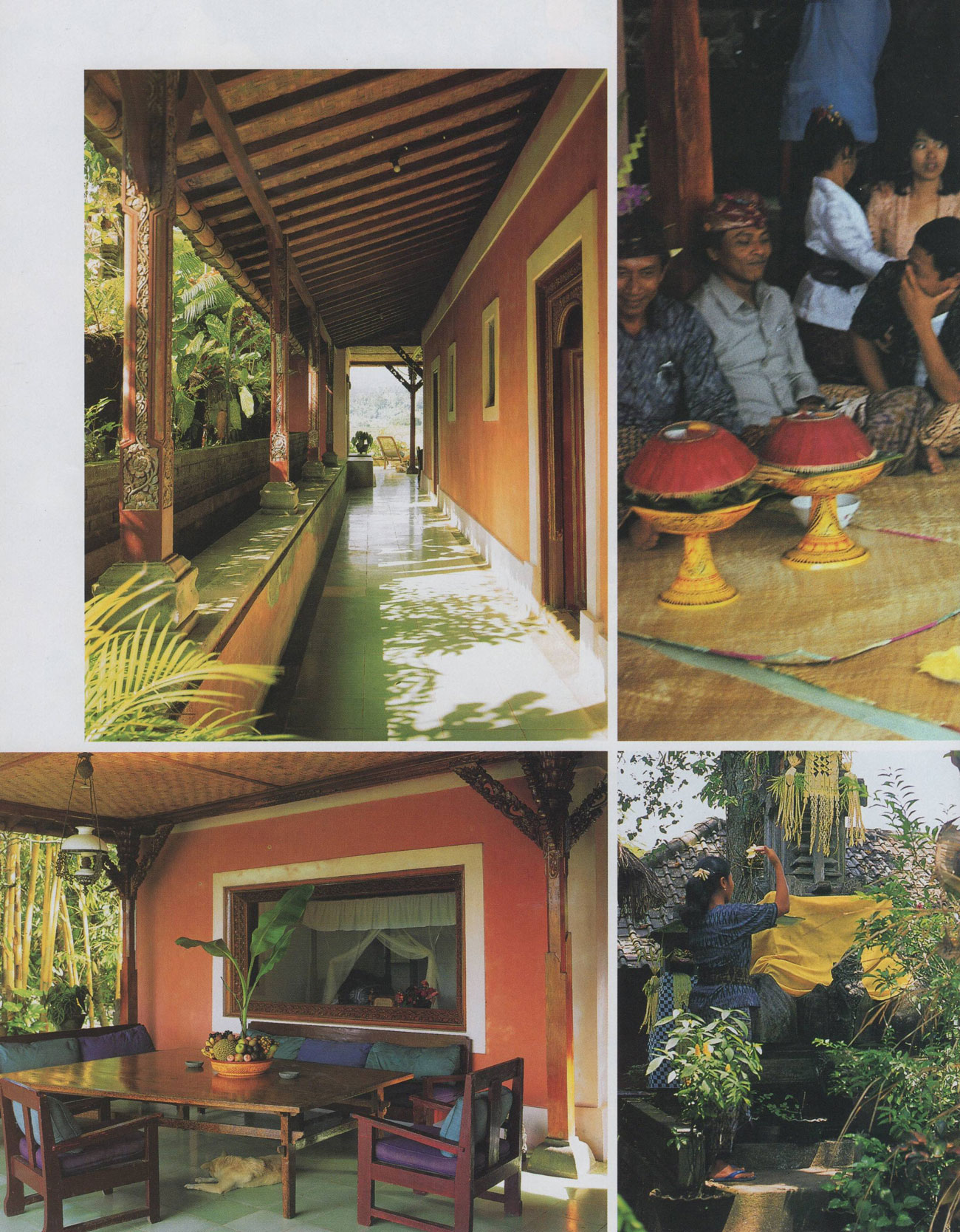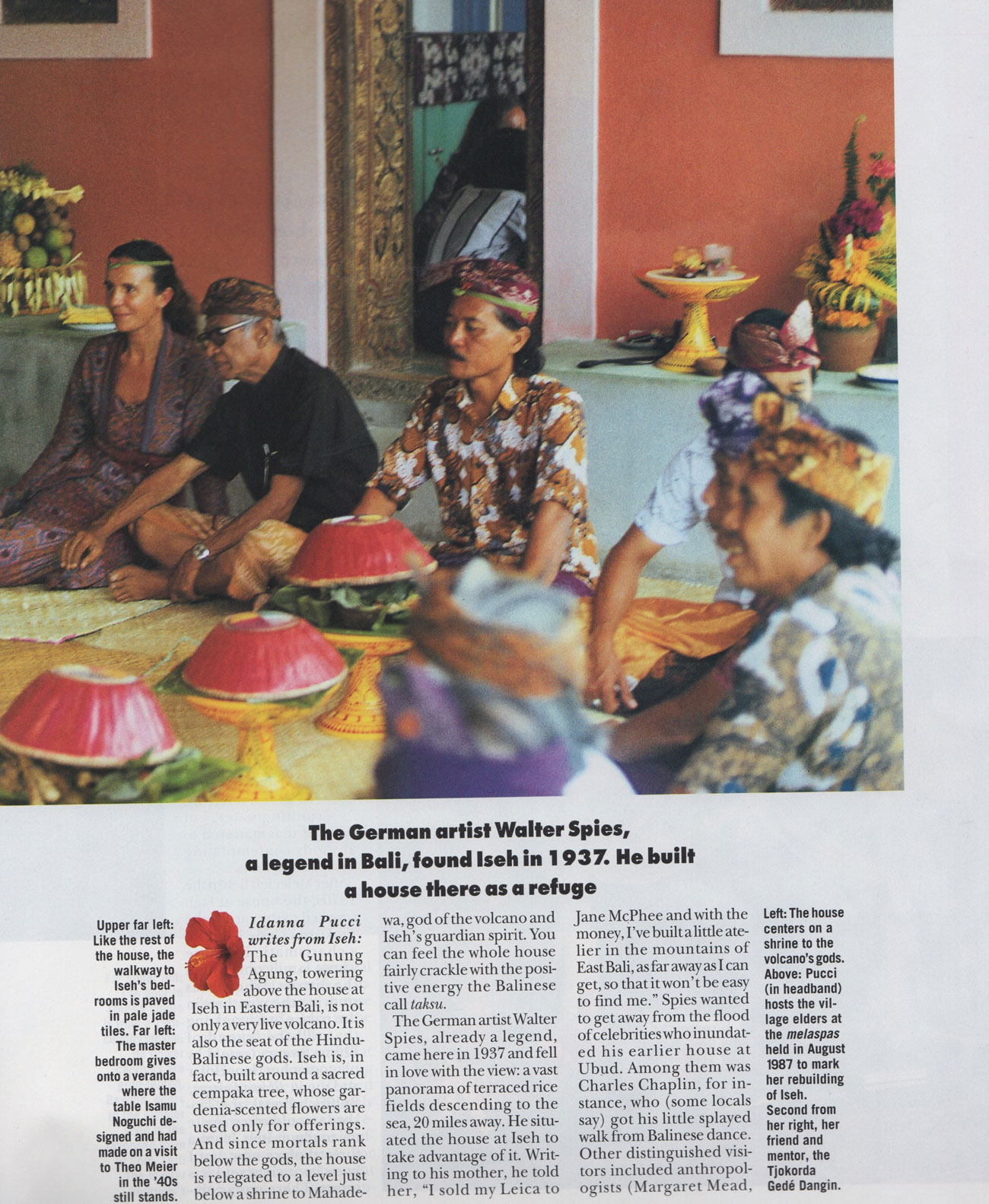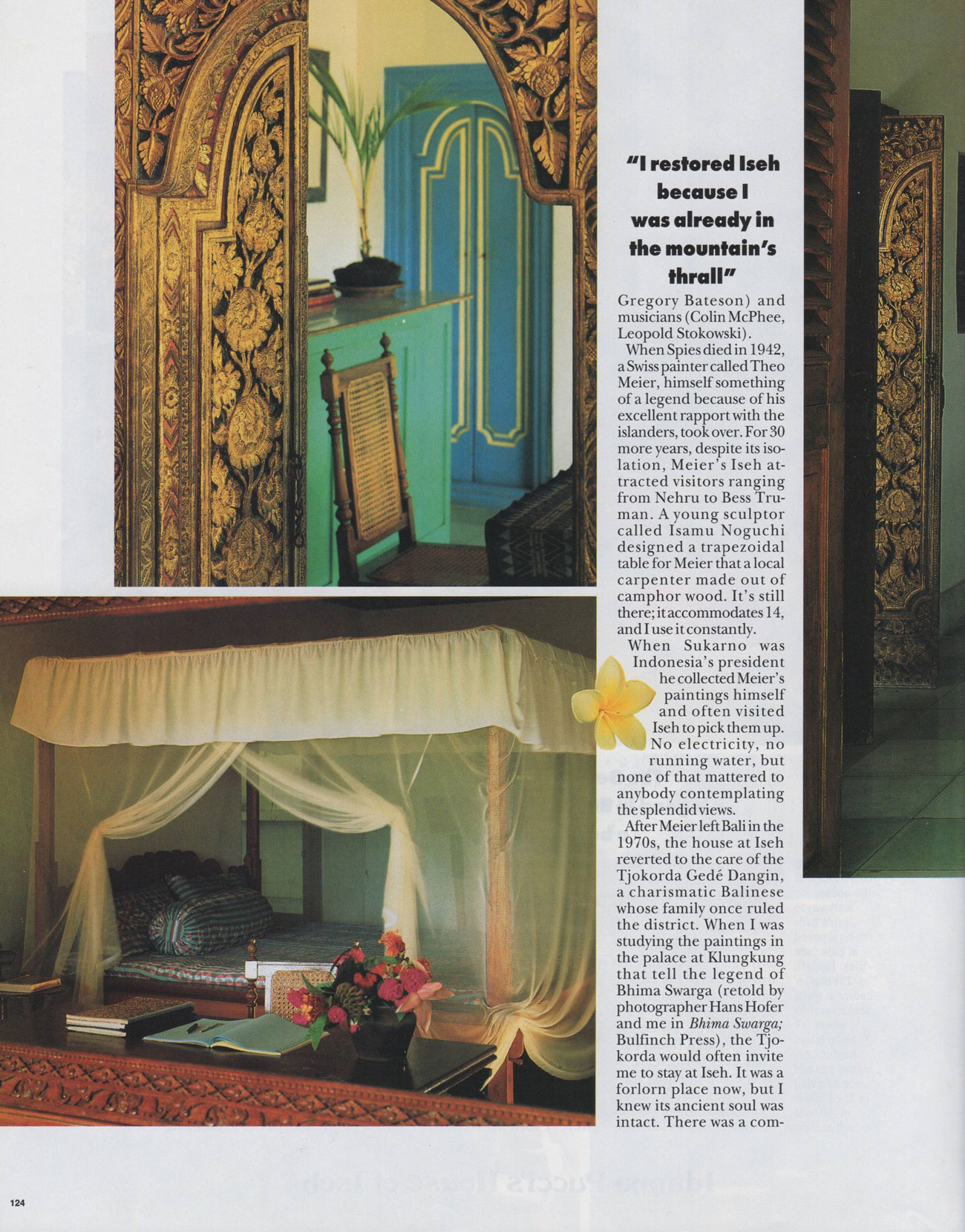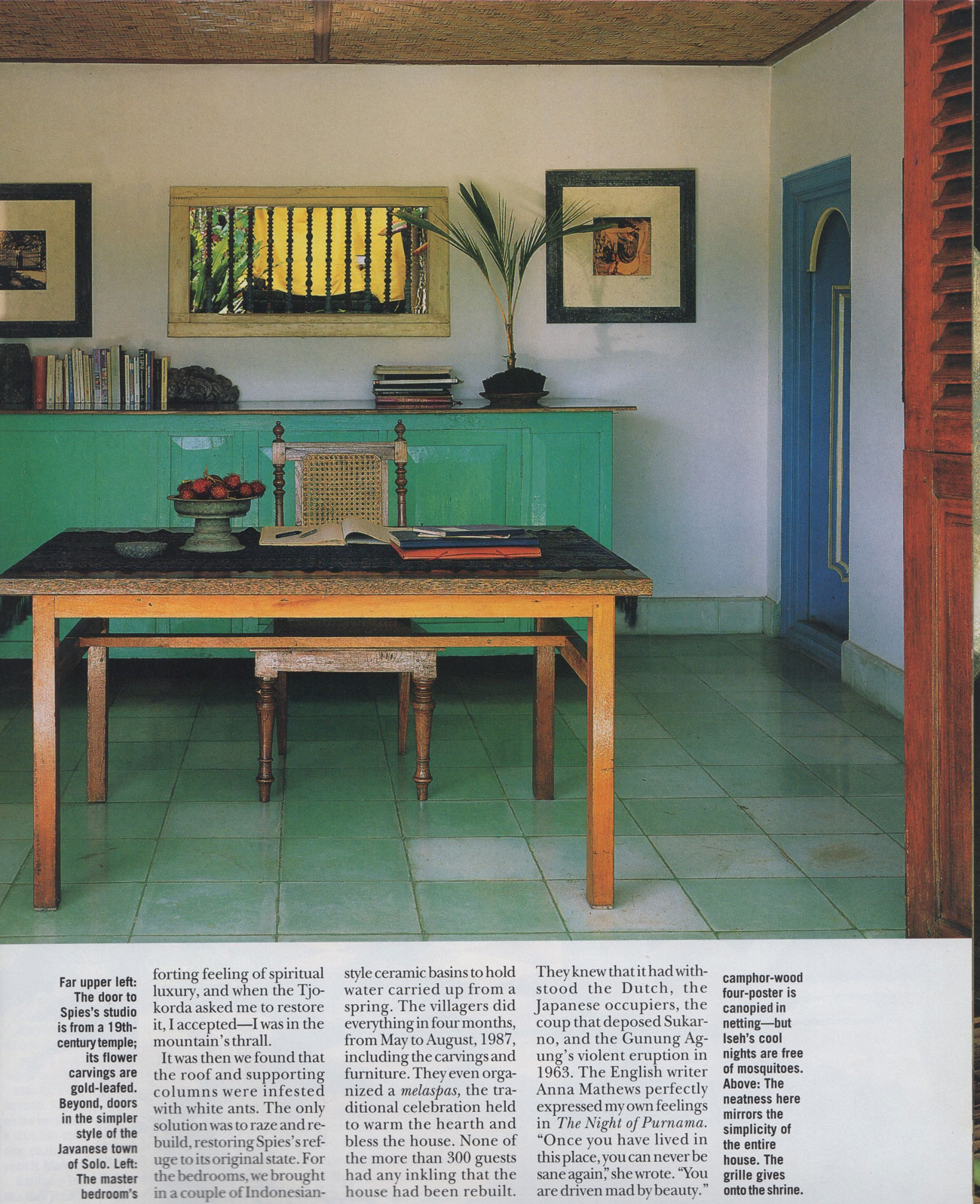Idanna Pucci writes from Iseh:
“The Gunung Agung, towering above the house in Iseh, East Bali, is not only a very live volcano, it is the seat of the Hundu Balinese Gods. The house is, in fact, built around a sacred cempaka tree, whose gardenia-scented flowers are used only for offerings. And since mortals rank below the gods, the house is relegated to a level just below a shrine to Mahadewa, god of the volcano and the house’s guardian spirit. You can feel the whole place fairly crackle with positive energy, the Balinese taksu.
“The German-Russian artist Walter Spies, already a legend, came here in 1937 and fell in love with the view: a vast panorama of terraced rice fields descending to the sea, 20 miles away. He situated the house at Iseh to take advantage of it. Writing to his mother, he told her, “I sold my Leica to Jane McPhee and with the money, I built a little atelier in the mountains of East Bali, as far away as I can get, so it will not be easy to find me.”
“Spies wanted to get away from the flood of celebrities who inundated his earlier house in Ubud. Among them was Charlie Chaplin, for instance, who (some local say) got his little penguin walk from Balinese theatre. Other distinguished visitors included anthropologists (Margaret Mead, Gregory Bateson) and musicians (Colin McPhee, Leopold Stokowski).
“When Spies died in 1942, a Swiss painter called Theo Meier, himself something of a legend because of his excellent rapport with the islanders, took over. For 30 more years, despite its isolation, Meier’s Iseh atelier attracted visitors ranging from Nehru to Bess Truman. A young Japanese sculptor, Isamu Noguchi, designed a trapezoidal table for Meier that a local carpenter made out of camphor wood. It is still there; it accommodates 14 and I use it constantly.
“When Sukarno was Indonesia’s president he collected Meier’s paintings himself and often visited Iseh to pick them up. No electricity, no running water, but none of that matter to anybody contemplating the splendid views.
“After Maier left Bali in the early 1970s, the house reverted to the care of the Tjokorda Gedé Danging, a charismatic Balinese whose family once ruled the district. When I was studying the paintings in the royal court of justice of Klungkung that narrate the legend of Bhima Swarga (retold in my book The Epic of Life), the Tjokorda would often invite me to stay at Iseh. It was a forlorn place, but I knew its ancient soul was intact. There was a comforting feeling of spiritual luxury, and when the Tjokorda asked me to restore it, I accepted – I was in the mountain’s thrall.
“It was then we found that the roof and supporting columns were infested with white ants. The only solution was to raze and rebuild, restoring Spies’ refuge to its original state. For the bedrooms, we brought in a couple Indonesian-style ceramic basis to hold water carried up from the spring. The villagers did everything in four months, from May to August 1987, including the carvings and furniture. They even organized a melaspas, the traditional celebration held to warm the hearth and bless the house. None of the 300 guests had any inkling that the house had been rebuilt. They knew that it had withstood the Dutch, the Japanese occupiers, the coup that deposed Sukarno, and the Gunung Agung’s violent eruption in 1963.
“The English writer Anna Matthews perfectly expressed my own feelings in The Night of Purnama, ‘Once you have lived in this place, you can never be same again,’ she wrote. ‘You are driven mad by beauty.’





